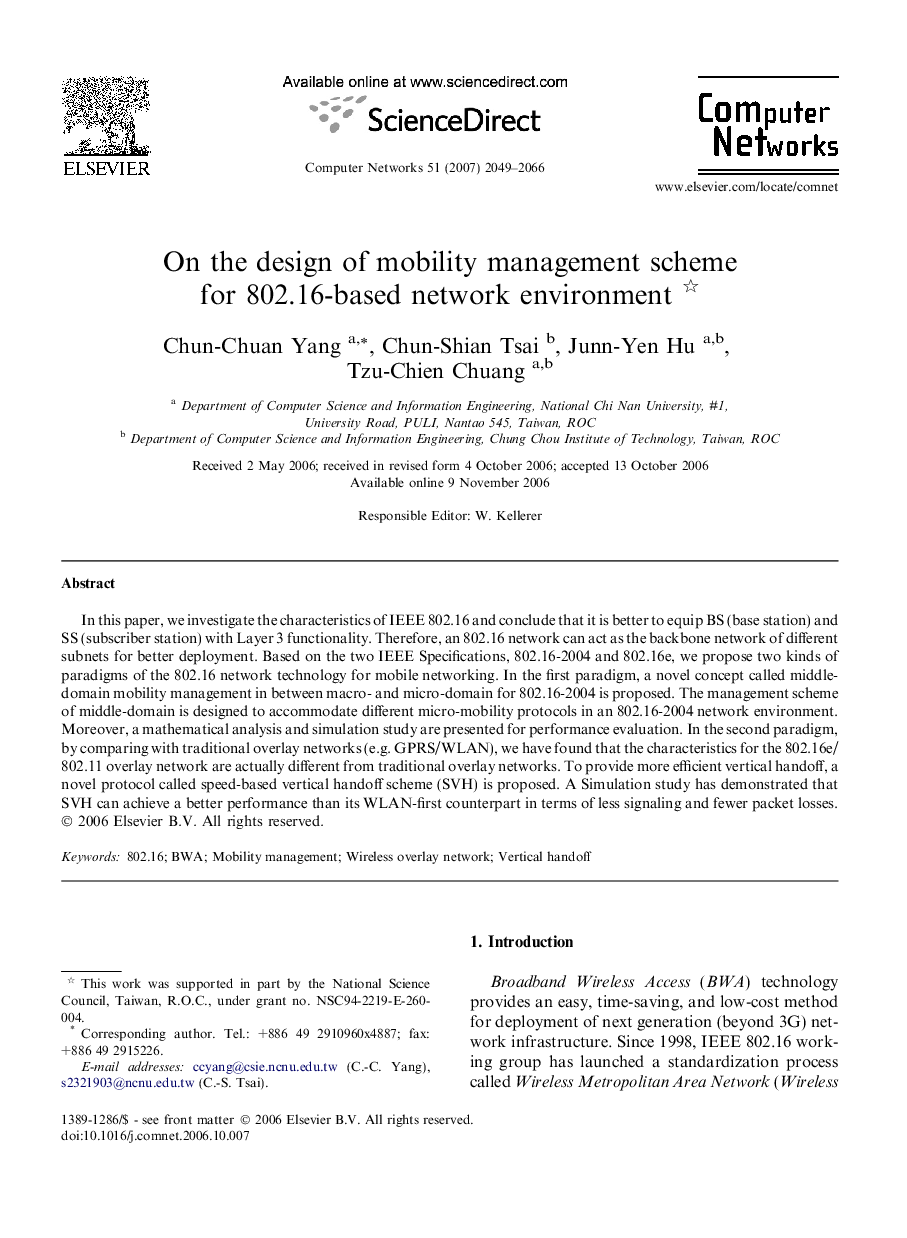| Article ID | Journal | Published Year | Pages | File Type |
|---|---|---|---|---|
| 452720 | Computer Networks | 2007 | 18 Pages |
In this paper, we investigate the characteristics of IEEE 802.16 and conclude that it is better to equip BS (base station) and SS (subscriber station) with Layer 3 functionality. Therefore, an 802.16 network can act as the backbone network of different subnets for better deployment. Based on the two IEEE Specifications, 802.16-2004 and 802.16e, we propose two kinds of paradigms of the 802.16 network technology for mobile networking. In the first paradigm, a novel concept called middle-domain mobility management in between macro- and micro-domain for 802.16-2004 is proposed. The management scheme of middle-domain is designed to accommodate different micro-mobility protocols in an 802.16-2004 network environment. Moreover, a mathematical analysis and simulation study are presented for performance evaluation. In the second paradigm, by comparing with traditional overlay networks (e.g. GPRS/WLAN), we have found that the characteristics for the 802.16e/802.11 overlay network are actually different from traditional overlay networks. To provide more efficient vertical handoff, a novel protocol called speed-based vertical handoff scheme (SVH) is proposed. A Simulation study has demonstrated that SVH can achieve a better performance than its WLAN-first counterpart in terms of less signaling and fewer packet losses.
